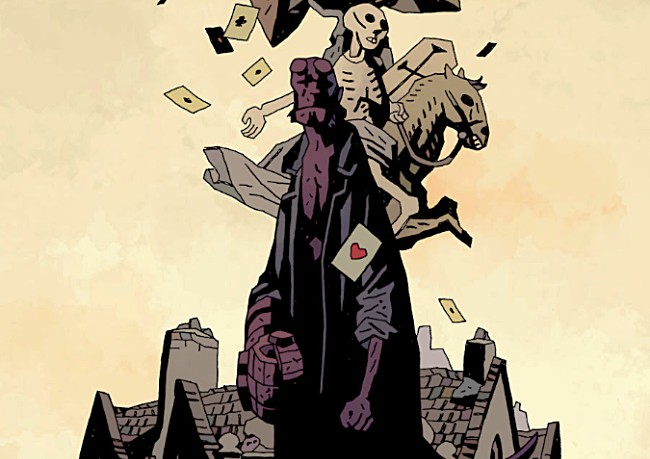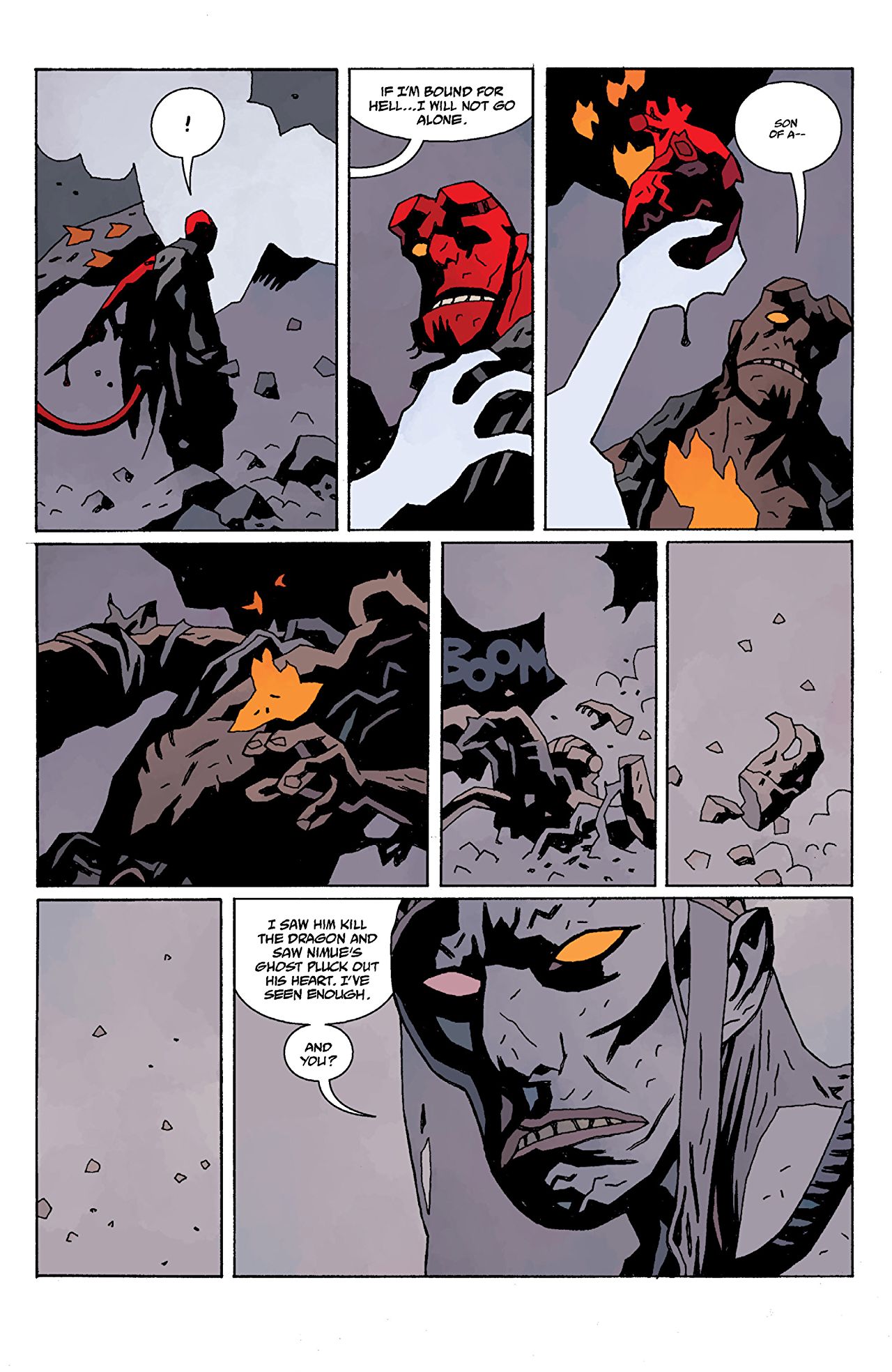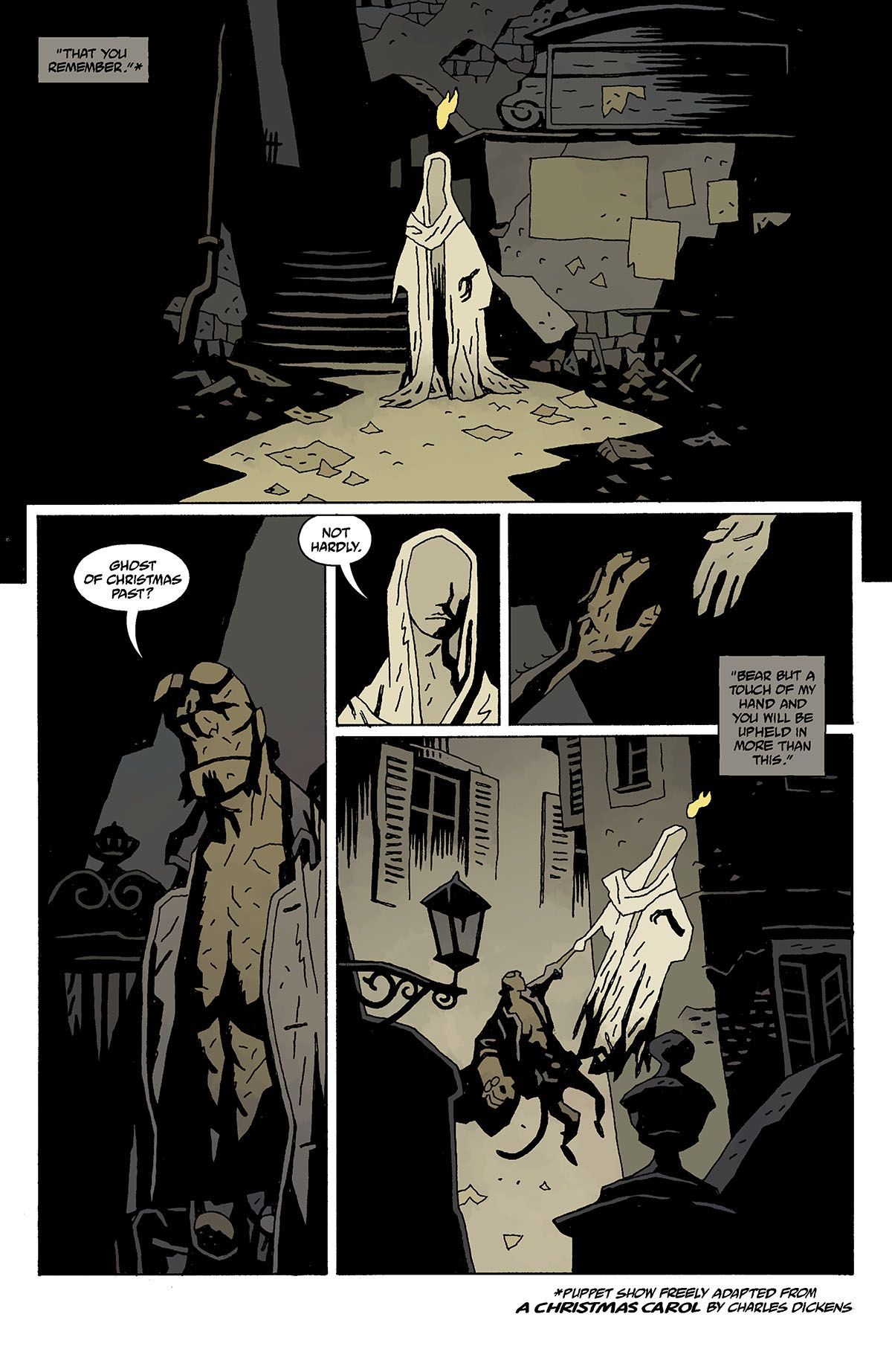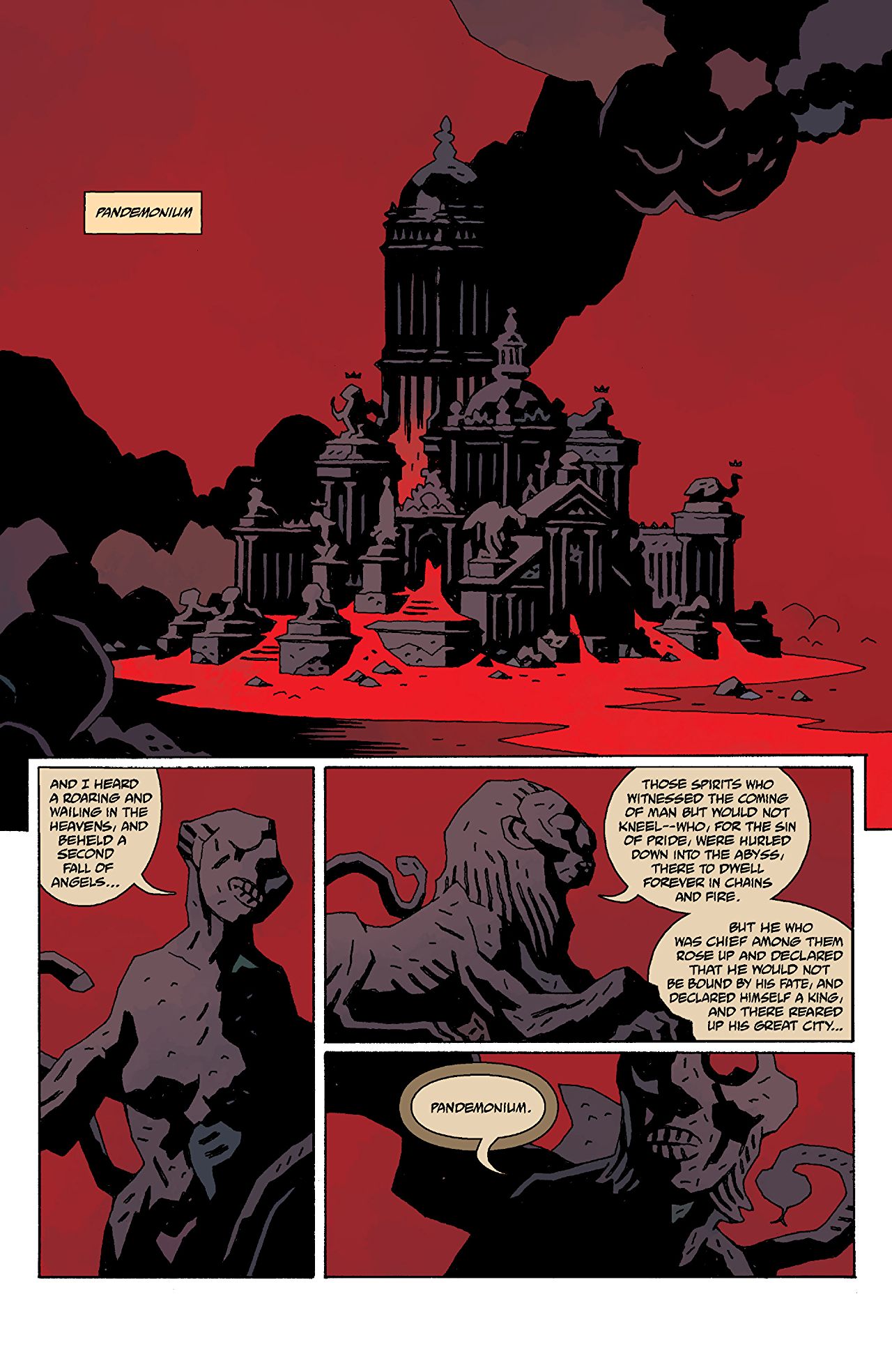
One of Hellboy’s greatest strengths, a strength that places him neatly in the ranks of the greatest comic book characters ever created, is his adaptability.
In 25 years of stories, he’s never grown stale or repetitive, even though his stories are always supernatural adventures full of monsters, witches, and spirits. Creator Mike Mignola wisely built a world around Big Red that’s a grab bag of basically any supernatural saga you want, from Arthurian Legend to vampire myths to obscure Russian folk tales, so even though Hellboy’s always starring in roughly the same genre of story, those stories are endlessly customizable, and the character’s Monster with a Heart of Gold dynamic allows him to do everything from black comedy to bleak apocalyptic drama and virtually anything else the super-elastic Hellboy mold can hold. He’s a demon with the potential to end all of existence, but he’s also just a kid who likes pancakes. The space between is vast and delightful.
That sense of tonal versatility that Hellboy’s retained for nearly three decades is what made the character’s most recent trip to the big screen especially disappointing because it seemed like it had the potential to work.
Neil Marshall’s film sought to blend the lightheartedness of Guillermo del Toro’s two Hellboy films with Marshall’s own sense of gore-laden horror, and some key moments aside, the thing just didn’t land. It missed the mark so obviously that even its star, David Harbour, freely admitted to its problems. Hellboy’s endless flexibility, it seems, reached a limit of sorts in the midst of a superhero boom, throwing the character’s live-action future into jeopardy.
As long as superhero franchises persist on the big and small screen, though, there will be room somewhere for Hellboy, particularly now that his publisher, Dark Horse Comics, has a first-look deal at Netflix. The streaming giant could, with an appropriately sized budget, be a productive home for Big Red and his stories, which in the comics often alternate between short bursts of folklore-inspired adventure and months-long arcs with apocalyptic implications. With that in mind, let’s be optimists about this, as Hellboy fans and as people seeking escape from a cruel world via the joys of filmed entertainment. If Hellboy gets another chance at live-action, particularly under the longform-friendly umbrella that is streaming, what is the ideal place for filmmakers to take things?
Well, all things being equal, that would be Hellboy In Hell.

The 10-issue comic book series released between 2012 and 2016 is, in many ways, exactly what it says on the tin. The story begins as Hellboy begins his descent into Hell after he was killed in his last adventure, The Storm and the Fury, by the ghost of Nimue (the evil witch who served as the villain for the recent film), who was determined to drag him down into hell with her. As he enters the underworld, Hellboy finds a whole new landscape full of enemies, rivals, and allies await him, and with their guidance (wanted and unwanted) he will confront his destiny in ways he never imagined.
This is, of course, extremely rad.
Hellboy In Hell marked the return of Mignola himself as the character’s main artist, and the book is appropriately gorgeous. No one in comics plays with shadow quite like Mignola, and his willingness to let the series go as long as he felt it should (at one point it was going to be shorter) means that his compositions shift seamlessly between intense action, carefully planned exposition, and exquisite tone poem. This is particularly evident in the way the book plays with the look of Hellboy himself, who often trades his signature red hue for an ashen grey look, constantly reminding the reader that he is not what he once was, and that this is an entirely new realm.

And what a realm. Thinking of Hell in fiction often conjures up images of a lake of fire or a series of cavernous torture chambers, but Mignola is not content with such simplicity. His Hell is a sprawling place of cities, rivers, palaces, and long-forgotten corners. It’s a place with its own nightmarish geography that also often eerily resembles our own world (What could be more hellish for some poor souls than a reminder of what they’ve lost, after all?). This allows Hellboy to meet everyone from the Princes of Hell to wayward sorcerers to a couple of guys who are convinced they can draw a map of all of Hell if given enough time and the right information. It also allows him to confront his own story in a particularly powerful way.
Through Hellboy In Hell, Mignola is able to go forward by going backward, as Hellboy both confronts his future and revisits his past through his demonic relatives. We see his origin here in more detail than in any other story, meet the major players in trying to manipulate his hellish destiny, and even hear from his ex-wife. It’s a tour through Hellboy’s history that also feels entirely fresh and new, and all builds to a climax that somehow manages to be worthy of this sprawling, ambitious epic.
Hellboy In Hell everything you could ever want in a story from a character called Hellboy, with plenty of flashbacks and side stories seeded throughout to leave room for what could essentially be an open-ended adaptation. And of course, it shouldn’t surprise anyone to find out that, even after dying and going to Hell, Hellboy got better, so the story could continue even beyond this journey into the heart of Pandemonium.

It might not happen soon, but someday Hellboy will make his way back to live-action stories, and when he does, a journey to his demonic birthplace might be the best way to deliver a bold, refreshing story that audiences won’t be able to ignore.






